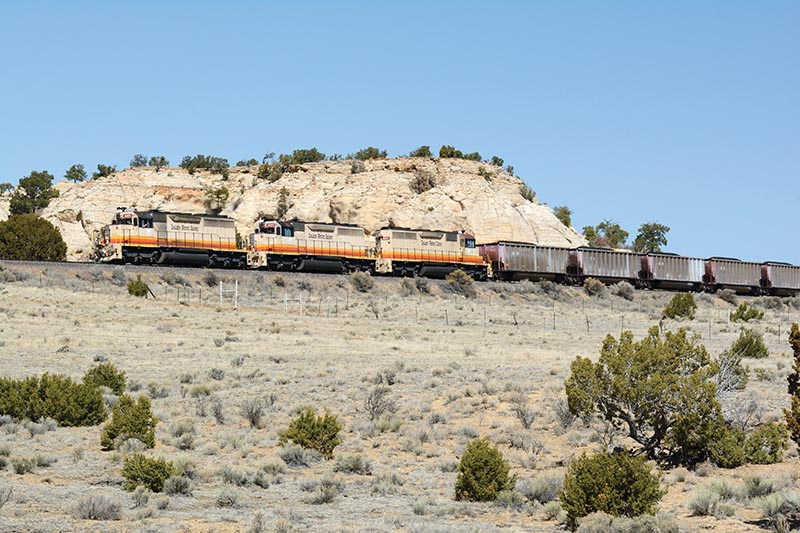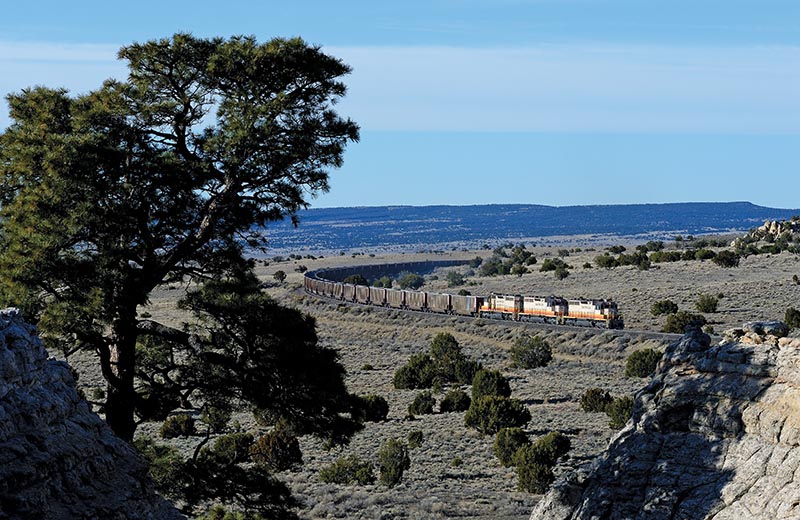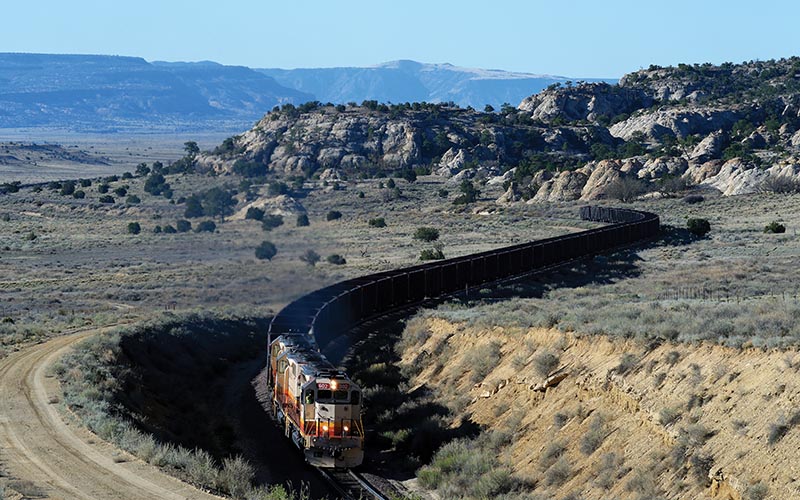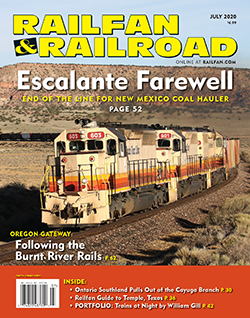After existing for 35 years in relative obscurity, New Mexico’s Escalante-Western Railway (ESWR) ceased operations at the end of April after delivering one final load of coal to the Tri-State Escalante Generating Station in Prewitt, N.M. Built as the Plains Escalante Generating Station (PEGS) and placed into operation in 1985, the plant is scheduled to be shut down by the end of 2020 as part of Tri-State’s move toward renewable energy and to conform to the Energy Transition Act that was signed into New Mexico law in 2019. The closure of the power plant will ultimately result in the loss of 107 jobs at the plant as well as a number of indirect jobs in the community, for a total loss of 150 jobs.
Located in west-central New Mexico, adjacent to the BNSF Railway Transcon, the railroad was rarely visited due to the isolated desert terrain through which it traveled. The only ESWR-owned trackage was a 3.2-mile spur between the plant and Escalante Junction at milepost 5 on the BNSF Lee Ranch Subdivision, which diverges from the main line at Baca. ESWR would then operate on BNSF (former Santa Fe) tracks to reach one of two mines to the north and east.

The locomotives are nearly camouflaged against the rock bluff near milepost 20, three miles east of Ambrosia, on April 6, 2020. This is one of the locations where the tracks come close to the highway but are still separated by private ranch land. Joel Wendt photo
The first mine along the line, Lee Ranch Mine, began production in 1984 and is currently idled. The only producing mine on the Lee Ranch Subdivision today is El Segundo (“the second” in Spanish) Mine that began production in 2008. Coal production at El Segundo is more economical due to its much lower overburden ratio compared to that for Lee Ranch. Both mines are currently owned by Peabody Energy Corporation.

Escalante-Western’s trio of SD40s lifts empty coal buckets up a 1.82 percent grade with ease on March 31, 2020. Philip A. Brahms photo
Rail access to El Segundo Mine required the building of a segment of the long-proposed Star Lake Railroad, once envisioned to extend much farther north but long mired in legal and environmental opposition. First proposed by Santa Fe Railway in 1974, the 100-mile line would have extended all the way into San Juan County in northwestern New Mexico to tap the substantial coal reserves located throughout the region. The present Star Lake Railroad extends from Lee Ranch Junction at mile 27.3 to the restricted limits at mile 32.4 and crosses the Continental Divide just before reaching the mine.
With the closure of the Escalante power plant, the primary remaining customer for El Segundo Mine is the large generating station in Springerville, Ariz., served by BNSF via the Coronado and Springerville subdivisions. Other customers include Arizona Public Service’s Cholla Plant in Joseph City, Ariz., and Arizona Electric Power’s Apache Plant in Cochise, Ariz. None of these BNSF-operated trains follows any specific schedule…




